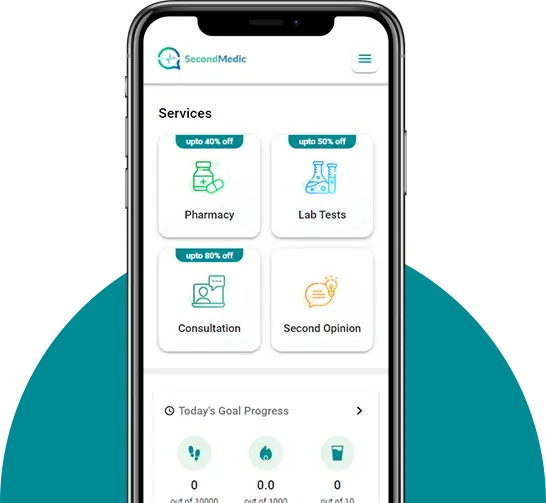- Published on: Aug 06, 2021
- 3 minute read
- By: Orthopedic Surgeon
Causes Of Chronic Lower Back Pain
Causes of Chronic Lower Back Pain
The causes of lower back pain are incredibly varied. Disc problems, spinal curvature issues, and muscle strain can all cause a person to experience discomfort in their lower spine region. However, sometimes the problem is not where it seems as some injuries that occur elsewhere on your body will still manifest themselves through symptoms such as numbness or tingling down one side of the leg which could be related to an injury experienced at work while bending over or lifting something heavy with an improper technique for example. Sometimes you may even have absolutely no idea what caused your condition but if left untreated it might lead to chronic conditions like arthritis so check yourself often!
Facet joints are small bones that surround the spinal discs. There's one on each side of your spine, and they're responsible for keeping you upright while supporting a lot of weight! Sometimes these little guys can get jammed up with arthritis or inflammation in their ligaments around the joint, which means it'll start hurting to stand upright for long periods of a time.
Sacroiliac joints are a strong and low-motion joint that connects the sacrum at the bottom of your spine to each side of your pelvis. The function is primarily absorption due to its shock-absorbing nature, but it can also become painful if there's too much or not enough motion in this area depending on what causes inflammation (sacroilitis)
When the sacroiliac joint is inflamed, it can become painful. Sacral dysfunction usually occurs when there's too much or too little motion of this strong and low-motion joint that connects our spine to each side of our pelvis. The sacrum absorbs shock and tension between the upper body and lower body while also providing stability for walking upright on two feet - without a sense os balance provided by an active SIJ (sacroiliac joints).
The ills that cause inflammation in your SIJ might be due to overuse, injury or other trauma; lack proper alignment during pregnancy; hormonal fluctuation from menstruation cycles associated with Hormone Replacement Therapy treatments such as birth control pills
Spinal stenosis is when the spinal canal has narrowed, and this causes pain. Pain can be caused by central narrowing of the spine or forminal narrowing in any area of your lower back- as well as at different levels on either side where it occurs multiple times.
Spondylolisthesis is a condition that occurs when one vertebra slips over the adjacent one. It can be caused by a defect or fracture of the pars (between facet joints) or mechanical instability of these facets (degenerative). The pain may come from back and leg pains due to either compression on nerves in your legs, which would cause you to feel discomfort while sitting still for long periods at time as well as spasms during walking, numbness between your buttocks cheeks; paresthesia-tingling sensation where there should not be any feeling such weakness behind knee knees because it's nerve impingement; tight hamstrings restricting movement in lower extremities causing buttock pain.
Spinal osteoarthritis is a condition that results from the wear and tear of your discs which can cause inflammation, instability, and stenosis. The pain associated with this disease may be high or low intensity at any given time. As you age spinal osteoarthritis will slowly progress until it takes over every facet joint in your spine resulting in more intense symptoms like stiffness, numbness, weakness on one side of the body due to nerve compression as well as chronic backache.
Rheumatoid arthritis is one of the most common inflammatory joint diseases and can affect people at any age. It's an autoimmune disease, which means that it causes your body to attack itself instead of a virus or bacteria like other infections do. Symptoms for rheumatoid arthritis include redness in joints, swelling around them, pain when you move certain parts of your body, stiffness in some places where muscles are contracted too tightly against each other (called fixed points), fatigue from low activity levels due to increased discomfort while moving about after long periods without movement - these symptoms come on more gradually than they would with osteoarthritis and typically last longer as well since there isn't much inflammation-relieving rest involved during treatment.
The deformity is something that we all live with in some capacity. Depending on the severity, it could be a blessing or an inconvenience to our everyday life. Lower back pain can result when someone's spine curves out of shape and causes pressure between vertebrae and other structures such as discs, facet joints, sacroiliac joints or stenosis which impairs mobility.
The deformity may seem like a curse but for those living with scoliosis or kyphosis there are ways to manage their deformities without interfering too much into daily affairs; one example would be using braces while sleeping at night so they don't have any more issues during waking hours because often times stiffness will persist after 8-10 hours.
It is not uncommon for people to struggle with painful curvature of the spine. Scoliosis and kyphosis are just two examples that can be associated with back pain, but there may also exist other types of deformity in your spine which you're unaware of until they become symptomatic. In any case, a consultation from an orthopedic surgeon would provide insight into what treatment plan will work best for you!
Curvatures in one's spinal column can lead down various paths- some more serious than others like scoliosis or kyphosis- all depending on how severe it becomes as time progresses. The deformities themselves could potentially cause lower back pain if enough pressure builds up over years where discs break down along facet joints.
Trauma is generally a very serious injury, which can cause extreme pain and other physical complications. The first step to treatment for trauma injuries should always be seeking medical help as soon as possible if you are suffering from back or neck problems that developed after an accident of some kind.
Due to weak bones, compression fractures are common in older people and can sometimes happen suddenly with intense pain.









